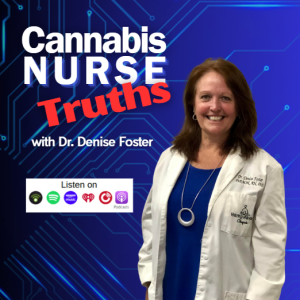
- Podcast Features
-
Monetization
-
Ads Marketplace
Join Ads Marketplace to earn through podcast sponsorships.
-
PodAds
Manage your ads with dynamic ad insertion capability.
-
Apple Podcasts Subscriptions Integration
Monetize with Apple Podcasts Subscriptions via Podbean.
-
Live Streaming
Earn rewards and recurring income from Fan Club membership.
-
Ads Marketplace
- Podbean App
-
Help and Support
-
Help Center
Get the answers and support you need.
-
Podbean Academy
Resources and guides to launch, grow, and monetize podcast.
-
Podbean Blog
Stay updated with the latest podcasting tips and trends.
-
What’s New
Check out our newest and recently released features!
-
Podcasting Smarter
Podcast interviews, best practices, and helpful tips.
-
Help Center
-
Popular Topics
-
How to Start a Podcast
The step-by-step guide to start your own podcast.
-
How to Start a Live Podcast
Create the best live podcast and engage your audience.
-
How to Monetize a Podcast
Tips on making the decision to monetize your podcast.
-
How to Promote Your Podcast
The best ways to get more eyes and ears on your podcast.
-
Podcast Advertising 101
Everything you need to know about podcast advertising.
-
Mobile Podcast Recording Guide
The ultimate guide to recording a podcast on your phone.
-
How to Use Group Recording
Steps to set up and use group recording in the Podbean app.
-
How to Start a Podcast
-
Podcasting
- Podcast Features
-
Monetization
-
Ads Marketplace
Join Ads Marketplace to earn through podcast sponsorships.
-
PodAds
Manage your ads with dynamic ad insertion capability.
-
Apple Podcasts Subscriptions Integration
Monetize with Apple Podcasts Subscriptions via Podbean.
-
Live Streaming
Earn rewards and recurring income from Fan Club membership.
-
Ads Marketplace
- Podbean App
- Advertisers
- Enterprise
- Pricing
-
Resources
-
Help and Support
-
Help Center
Get the answers and support you need.
-
Podbean Academy
Resources and guides to launch, grow, and monetize podcast.
-
Podbean Blog
Stay updated with the latest podcasting tips and trends.
-
What’s New
Check out our newest and recently released features!
-
Podcasting Smarter
Podcast interviews, best practices, and helpful tips.
-
Help Center
-
Popular Topics
-
How to Start a Podcast
The step-by-step guide to start your own podcast.
-
How to Start a Live Podcast
Create the best live podcast and engage your audience.
-
How to Monetize a Podcast
Tips on making the decision to monetize your podcast.
-
How to Promote Your Podcast
The best ways to get more eyes and ears on your podcast.
-
Podcast Advertising 101
Everything you need to know about podcast advertising.
-
Mobile Podcast Recording Guide
The ultimate guide to recording a podcast on your phone.
-
How to Use Group Recording
Steps to set up and use group recording in the Podbean app.
-
How to Start a Podcast
-
Help and Support
- Discover

Cannabis has been used by humans for over 6,000 years and is considered to be one of the first plants specifically cultivated for human use. In industrial uses, cannabis can be made into fibers, paper, oil, biofuel, animal bedding and feed, and construction materials, like hempcrete, hemp lumber, and hemp insulation.
As a medicine, cannabis can be specifically tailored to treat a disease by targeting the two major actions of cannabinoids, which are anti-oxidation and neuroprotection. That means that the cannabinoids found in cannabis can be used to treat every disease known to man, as we now recognize inflammation in the body and brain as the major driver of chronic disease states.
But cannabinoids can also offer protection and reversal of disease; some studies even suggest cannabinoids can reverse aging, especially in the brain as some of the compounds target sensitive cells in the central nervous system to protect, repair, and regrow new neurons that mimic young brains, even in older adults.
In this episode of Cannabis Nurse Truths, we examine the neuroprotective and reparative effects of cannabinoids, and studies to date have indicated that these compounds have incredible potential for treating - and reversing - a host of neurodegenerative diseases, like Alzheimer’s, Parkinson’s, multiple sclerosis, seizures, and even aging.
After all, it’s why the Department of Health and Human Services slapped a patent on cannabinoids as antioxidants and neuroprotectants back in 2003, indicating our government is heavily invested in research using cannabis to treat these disorders. Welcome to the Stoned Age!
EPISODE RESOURCES
Al-Khazaleh, A.K., Zhou, X., Bhuyan, D. J., Münch, G.W., Al-Dalabeeh, E.A., Jaye, K., & Chang, D. (2024). The neurotherapeutic arsenal in cannabis sativa: Insights into anti-neuroinflammatory and neuroprotective activity and potential entourage effects. Molecules, 29(2), 410. https://doi.org/10.3390/molecules29020410
Arkell, T.R., Manning, B., Downey, L.A., & Hayley, A.C. (2023). A semi-naturalistic, open-label trial examining the effect of prescribed medical cannabis on neurocognitive performance. CNS Drugs, 37(11), 981–992. https://doi.org/10.1007/s40263-023-01046-z
Bilkei-Gorzo A. (2024). The endocannabinoid system in normal and pathological brain ageing. Philosophical Transactions of the Royal Society B, 367, 3326-3341. https://doi.org/10.1098/rstb.2011.0388
Bilkei-Gorzo, A., Albayram, O., Draffehn, A., Michel, K., Piyanova, A., Oppenheimer, H., Dvir-Ginzberg, M., Rácz, I., Ulas, T., Imbeault, S., Bab, I., Schultze, J. L., & Zimmer, A. (2017). A chronic low dose of Δ9-tetrahydrocannabinol (THC) restores cognitive function in old mice. Nature Medicine, 23(6), 782–787. https://doi.org/10.1038/nm.4311
Breivogel, C.S., & Childers, S.R. (1998). The functional neuroanatomy of brain cannabinoid receptors. Neurobiology of Disease, 5(6), 417–431. https://doi.org/10.1006/nbdi.1998.0229
Cammarota, M., Ferlenghi, F., Vacondio, F., Vincenzi, F., Varani, K., Bedini, A., Rivara, S., Mor, M., & Boscia, F. (2023). Combined targeting of fatty acid amide hydrolase and melatonin receptors promotes neuroprotection and stimulates inflammation resolution in rats. British Journal of Pharmacology, 180(10), 1316–1338. https://doi.org/10.1111/bph.16014
da Cruz Guedes, E., Erustes, A.G., Leão, A.H.F.F., Carneiro, C.A., Abílio, V.C., Zuardi, A. W., Hallak, J.E.C., Crippa, J.A., Bincoletto, C., Smaili, S.S., Reckziegel, P., & Pereira, G.J.S. (2023). Cannabidiol recovers dopaminergic neuronal damage induced by reserpine or α-synuclein in Caenorhabditis elegans. Neurochemical Research, 48(8), 2390–2405. https://doi.org/10.1007/s11064-023-03905-z
Dregan, A., & Gulliford, M.C. (2012). Is illicit drug use harmful to cognitive functioning in the midadult years? A cohort-based investigation. American Journal of Epidemiology, 175(3), 218–227. https://doi.org/10.1093/aje/kwr315
Dussy, F.E., Hamberg, C., Luginbühl, M., Schwerzmann, T., & Briellmann, T.A. (2005). Isolation of Δ9-THCA-A from hemp and analytical aspects concerning the determination of Δ9-THC in cannabis products. Forensic Science International, 149(1), 3–10. https://doi.org/10.1016/j.forsciint.2004.05.015
Evans, A.T., Formukong, E.A., & Evans, F.J. (1987). Actions of cannabis constituents on enzymes of arachidonate metabolism: Anti-inflammatory potential. Biochemical Pharmacology, 36(12), 2035–2037. https://doi.org/10.1016/0006-2952(87)90505-3
Fernández-Ruiz, J., Sagredo, O., Pazos, M.R., García, C., Pertwee, R., Mechoulam, R., & Martínez-Orgado, J. (2013). Cannabidiol for neurodegenerative disorders: Important new clinical applications for this phytocannabinoid?: Cannabidiol and neurodegenerative disorders. British Journal of Clinical Pharmacology, 75(2), 323–333. https://doi.org/10.1111/j.1365-2125.2012.04341.x
Goldberg, T., Redlich, Y., Yogev, D., Fay-Karmon, T., Hassin-Baer, S., & Anis, S. (2023). Long-term safety of medical cannabis in Parkinson’s disease: A retrospective case-control study. Parkinsonism & Related Disorders, 105406. https://doi.org/10.1016/j.parkreldis.2023.105406
Gruber, S.A., Sagar, K.A., Dahlgren, M.K., Racine, M.T., Smith, R.T., & Lukas, S.E. (2016). Splendor in the grass? A pilot study assessing the impact of medical marijuana on executive function. Frontiers in Pharmacology, 7. https://doi.org/10.3389/fphar.2016.00355
Gruber, S.A., Sagar, K.A., Dahlgren, M.K., Gonenc, A., Smith, R.T., Lambros, A.M., Cabrera, K. B., & Lukas, S. E. (2017). The grass might be greener: Medical marijuana patients exhibit altered brain activity and improved executive function after 3 months of treatment. Frontiers in Pharmacology, 8, 983. https://doi.org/10.3389/fphar.2017.00983
Hermann, D., & Schneider, M. (2012). Potential protective effects of cannabidiol on neuroanatomical alterations in cannabis users and psychosis: A critical review. Current Pharmaceutical Design, 18(32), 4897–4905. https://doi.org/10.2174/138161212802884825
Javed, H., Azimullah, S., Haque, M.E., & Ojha, S.K. (2016). Cannabinoid Type 2 (CB2) receptors activation protects against oxidative stress and neuroinflammation associated dopaminergic neurodegeneration in rotenone mModel of Parkinson’s Disease. Frontiers in Neuroscience, 10. https://doi.org/10.3389/fnins.2016.00321
Kale, M.B., Umare, M.D., Wankhede, N.L., Deshmukh, R., Abbot, V., Anwer, M.K., Taksande, B.G., Upaganlawar, A.B., Umekar, M.J., Ramniwas, S., Gulati, M., Arora, R., & Behl, T. (2025). Decoding the therapeutic potential of cannabis and cannabinoids in neurological disorders. Current Pharmaceutical Design, 31(8), 630–644. https://doi.org/10.2174/0113816128318194240918113954
Kojoma, M., Seki, H., Yoshida, S., & Muranaka, T. (2006). DNA polymorphisms in the tetrahydrocannabinolic acid (THCA) synthase gene in “drug-type” and “fiber-type” Cannabis sativa L. Forensic Science International, 159(2–3), 132–140. https://doi.org/10.1016/j.forsciint.2005.07.005
Mammana, S., Cavalli, E.; Gugliandolo, A.Silvestro, S., Pollastro, F., Bramanti, P., Mazzon, E. (2019). Could the combination of two non-psychotropic cannabinoids counteract neuroinflammation? Effectiveness of Cannabidiol Associated with Cannabigerol. Medicina, 55, 747. https://doi.org/10.3390/medicina55110747
Marchalant, Y., Brothers, H.M., Norman, G.J., Karelina, K., DeVries, A.C., Wenk, G.L. (2009). Cannabinoids attenuate the effects of aging upon neuroinflammation and neurogenesis. Neurobiology of Disease, 34(2), 300-307. https://doi.org/10.1016/j.nbd.2009.01.014
Marchalant, Y., Cerbai, F., Brothers, H.M., & Wenk, G.L. (2008). Cannabinoid receptor stimulation is anti-inflammatory and improves memory in old rats. Neurobiology of Aging, 29(12), 1894–1901. https://doi.org/10.1016/j.neurobiolaging.2007.04.028
McKetin, R., Parasu, P., Cherbuin, N., Eramudugolla, R., & Anstey, K.J. (2016). A longitudinal examination of the relationship between cannabis use and cognitive function in mid-life adults. Drug and Alcohol Dependence, 169, 134–140. https://doi.org/10.1016/j.drugalcdep.2016.10.022
Ming, G.-L., & Song, H. (2011). Adult neurogenesis in the mammalian brain: Significant answers and significant questions. Neuron, 70(4), 687–702. https://doi.org/10.1016/j.neuron.2011.05.001
Murray, C.J., Vecchiarelli, H.A., & Tremblay, M.-È. (2023). Enhancing axonal myelination in seniors: A review exploring the potential impact cannabis has on myelination in the aged brain. Frontiers in Aging Neuroscience, 15. https://doi.org/10.3389/fnagi.2023.1119552
Nadal, X., del Río, C., Casano, S., Palomares, B., Ferreiro‐Vera, C., Navarrete, C., Sánchez‐Carnerero, C., Cantarero, I., Bellido, M. L., Meyer, S., Morello, G., Appendino, G., & Muñoz, E. (2017). Tetrahydrocannabinolic acid is a potent PPARγ agonist with neuroprotective activity. British Journal of Pharmacology, 174(23), 4263–4276. https://doi.org/10.1111/bph.14019
Patel, V., Abu-Hijleh, F., Rigg, N., & Mishra, R. (2023). Cannabidiol Protects Striatal Neurons by Attenuating Endoplasmic Reticulum Stress. Cannabis and Cannabinoid Research, 8(2), 299–308. https://doi.org/10.1089/can.2022.0090
Pozo, A. D., Hoz-Rivera, M. de, Romero, A., Villa, M., Martínez, M., Silva, L., Piscitelli, F., Di Marzo, V., Gutiérrez-Rodríguez, A., Hind, W., & Martínez-Orgado, J. (2024). Cannabidiol reduces intraventricular hemorrhage brain damage, preserving myelination and preventing blood brain barrier dysfunction in immature rats. Neurotherapeutics: The Journal of the American Society for Experimental NeuroTherapeutics, 21(2), e00326. https://doi.org/10.1016/j.neurot.2024.e00326
Shapira, G., Israel-Elgali, I., Grad, M., Avnat, E., Rachmany, L., Sarne, Y., & Shomron, N. (2023). Hippocampal differential expression underlying the neuroprotective effect of delta-9-tetrahydrocannabinol microdose on old mice. Frontiers in Neuroscience, 17, 1182932. https://doi.org/10.3389/fnins.2023.1182932
Shoyama, Y., Tamada, T., Kurihara, K., Takeuchi, A., Taura, F., Arai, S., Blaber, M., Shoyama, Y., Morimoto, S., & Kuroki, R. (2012). Structure and function of ∆1-tetrahydrocannabinolic acid (THCA) synthase, the enzyme controlling the psychoactivity of Cannabis sativa. Journal of Molecular Biology, 423(1), 96–105. https://doi.org/10.1016/j.jmb.2012.06.030
Silva, M.H. (2024). Chapter 36—Neurotoxicity and neuroprotection induced by plant-derived cannabinoids. In M. R. de Oliveira (Ed.), Natural Molecules in Neuroprotection and Neurotoxicity (pp. 831–873). Academic Press. https://doi.org/10.1016/B978-0-443-23763-8.00071-3
Tadijan, A., Vlašić, I., Vlainić, J., Đikić, D., Oršolić, N., & Jazvinšćak Jembrek, M. (2022). Intracellular molecular targets and signaling pathways involved in antioxidative and neuroprotective effects of cannabinoids in neurodegenerative conditions. Antioxidants, 11(10), Article 10. https://doi.org/10.3390/antiox11102049
Valeri, A., & Mazzon, E. (2021). Cannabinoids and neurogenesis: The promised solution for neurodegeneration? Molecules, 26(20), 6313. https://doi.org/10.3390/molecules26206313
Verhoeckx, K.C.M., Korthout, H.A.A.J., van Meeteren-Kreikamp, A.P., Ehlert, K.A., Wang, M., van der Greef, J., Rodenburg, R.J.T., & Witkamp, R.F. (2006). Unheated cannabis sativa extracts and its major compound THC-acid have potential immuno-modulating properties not mediated by CB1 and CB2 receptor coupled pathways. International Immunopharmacology, 6(4), 656–665. https://doi.org/10.1016/j.intimp.2005.10.002
Watson, K.K., Bryan, A.D., Thayer, R.E., Ellingson, J.M., Skrzynski, C.J., & Hutchison, K. E. (2022). Cannabis use and resting state functional connectivity in the aging brain. Frontiers in Aging Neuroscience, 14, 804890. https://doi.org/10.3389/fnagi.2022.804890
More Episodes
 2025-04-30
2025-04-30
 30
30
 2025-03-19
2025-03-19
 39
39
 2025-03-12
2025-03-12
 30
30
 2025-03-12
2025-03-12
 15
15
 2025-02-13
2025-02-13
 52
52
 2025-01-29
2025-01-29
 73
73
 2025-01-22
2025-01-22
 55
55
 2024-12-04
2024-12-04
 67
67
 2024-11-20
2024-11-20
 24
24
 2024-11-13
2024-11-13
 16
16
 2024-11-06
2024-11-06
 44
44
Create your
podcast in
minutes
- Full-featured podcast site
- Unlimited storage and bandwidth
- Comprehensive podcast stats
- Distribute to Apple Podcasts, Spotify, and more
- Make money with your podcast
It is Free
- Privacy Policy
- Cookie Policy
- Terms of Use
- Consent Preferences
- Copyright © 2015-2025 Podbean.com



